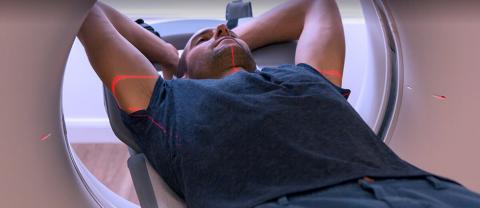Low-dose lung cancer screening program now offered

Harrison Memorial Hospital now offers low-dose CT scans that help doctors detect lung cancer before symptoms occur. This low-dose CT scan has been proven to save lives by discovering lung cancer in its earliest stages.
“According to the U.S. Preventive Services Task Force, it is estimated that screening could save 20,000 lives a year,” says Sheila Currans, HMH Chief Executive Officer. “By offering this program, we hope to be able to save more lives in our community.”
Patients who benefit most from this low-dose CT scan are those at high risk for lung cancer. That includes those between the ages of 55 and 77; AND those who currently smoke or who quit smoking in the last 15 years; AND those who have a smoking history of at least 30 pack years. Pack years are calculated by multiplying your average number of packs smoked per day by the number of years you have smoked. For example, if you smoked one pack of cigarettes per day for 30 years, it would equal 30 pack years (1 pack x 30 years = 30 pack years). Or if you have smoked 1½ packs per day for 20 years, that would equal 30 pack years( 1½ packs per day x 20 years = 30 pack years).
“It is imperative that you speak with your healthcare provider if these guidelines apply to you,” says Dr. Allen Bond, HMH Radiologist. “Detecting lung cancer in its earliest stages makes treatment options more effective.”
Don’t wait until you have symptoms, because by that time, it may be too late.
If these guidelines apply to you, talk to your doctor or other healthcare provider about our lung cancer CT screening. Your doctor can refer you and schedule your low-dose CT screening at Harrison Memorial Hospital. A referral from your physician is required.
A CT scan produces a cross-sectional image of the human anatomy, which helps the clinician rule out or confirm the presence of certain diseases. During the non-invasive test, the patient is placed on a table and moved incrementally through the squared-off, doughnut-shaped scanner, while an x-ray beam is projected through cross sections of his or her anatomy. The x-ray energy passes through the patient and is recorded on electronic detectors in the scanner. This information is then sent to a specialized computer that reconstructs the information into individual slices and combines them sequentially into a comprehensive volume image of the entire area scanned. The thinner the slices, the more revealing the detail is in the resulting images and the more definitive the exam results.
Low-dose CT scans expose people to radiation. However, for heavy former or current smokers, the benefit of a lung cancer screening probably greatly outweighs the harm from radiation.
The most important thing you can do to prevent lung cancer is to stop smoking. Whether or not you are screened, quitting smoking is the most powerful way to reduce your risks of dying or suffering from lung cancer, emphysema and heart attacks.
